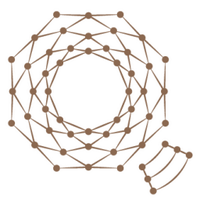QuaternionGroup
 |
|
Definitions
created on January 10, 2013
A geo-fence is a virtual perimeter for a real-world geographic area..
A geo-fence could be dynamically generated?as in a radius around a store or point location. Or a geo-fence can be a predefined set of boundaries, like school attendance zones or neighborhood boundaries. Custom-digitized geofences are also in use.
When the location-aware device of a location-based service (LBS) user enters or exits a geo-fence, the device receives a generated notification. This notification might contain information about the location of the device. The geofence notice might be sent to a mobile telephone or an email account.
Geofencing, used with child location services, can notify parents when a child leaves a designated area.[1]
Geofencing is a critical element to telematics hardware and software. It allows users of the system to draw zones around places of work, customers sites and secure areas. These geo-fences when crossed by an equipped vehicle or person can trigger a warning to the user or operator via SMS or Email.
Other applications include sending an alert if a vehicle is stolen[2] and notifying rangers when wildlife stray into farmland.[3]
Geofencing in a security strategy model provides security to wireless local area networks. This is done by using predefined borders, e.g., an office space with borders established by positioning technology attached to a specially programmed server. The office space becomes an authorized location for designated users and wireless mobile devices.
created on January 10, 2013
A proximity sensor is a sensor able to detect the presence of nearby objects without any physical contact.
A proximity sensor often emits an electromagnetic field or a beam of electromagnetic radiation (infrared, for instance), and looks for changes in the field or return signal. The object being sensed is often referred to as the proximity sensor's target. Different proximity sensor targets demand different sensors. For example, a capacitive photoelectric sensor might be suitable for a plastic target; an inductive proximity sensor always requires a metal target.
The maximum distance that this sensor can detect is defined "nominal range". Some sensors have adjustments of the nominal range or means to report a graduated detection distance.
Proximity sensors can have a high reliability and long functional life because of the absence of mechanical parts and lack of physical contact between sensor and the sensed object.
Proximity sensors are also used in machine vibration monitoring to measure the variation in distance between a shaft and its support bearing. This is common in large steam turbines, compressors, and motors that use sleeve-type bearings.
International Electrotechnical Commission (IEC) 60947-5-2 defines the technical details of proximity sensors.

